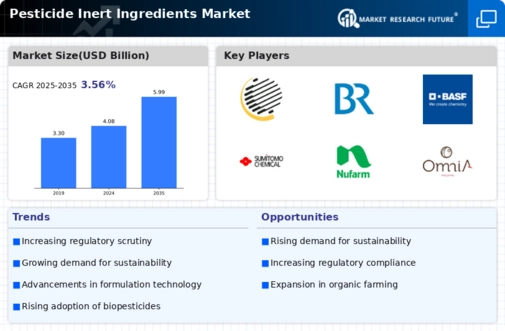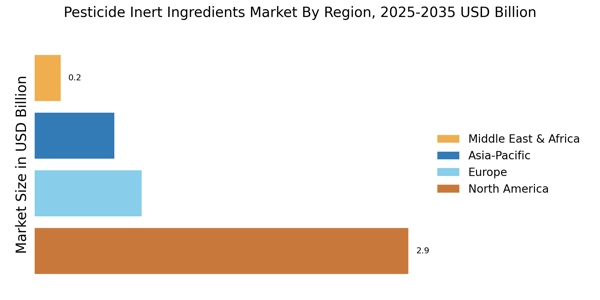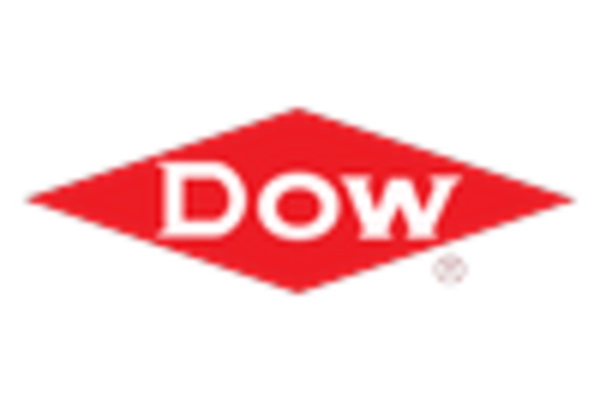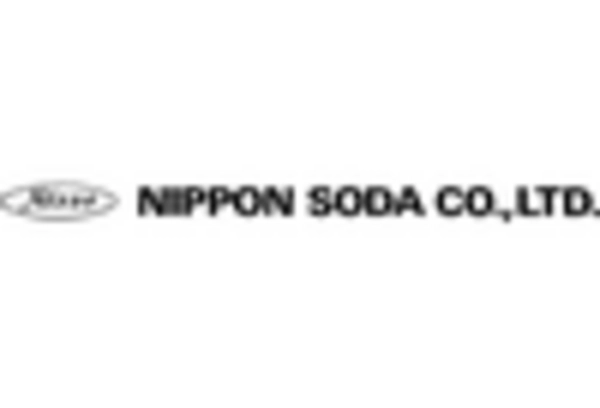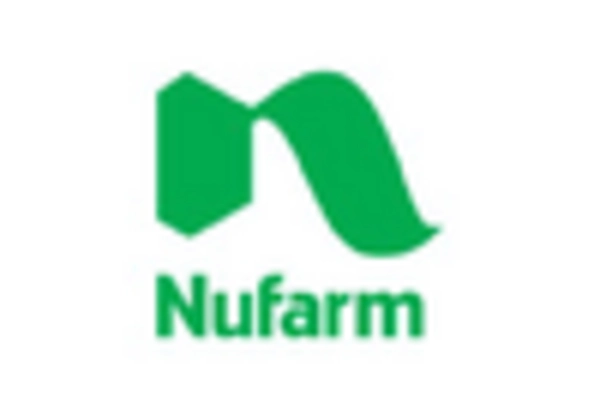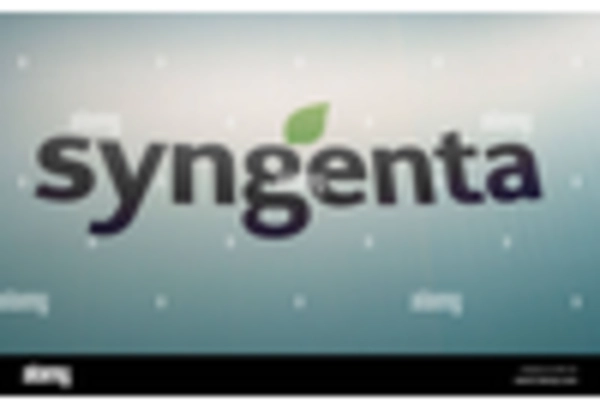Stringent Regulatory Frameworks
The Pesticide Inert Ingredients Market is heavily influenced by stringent regulatory frameworks that govern the use of inert ingredients in pesticide formulations. Regulatory bodies are increasingly scrutinizing the safety and environmental impact of these ingredients, which necessitates compliance from manufacturers. Recent regulations have mandated comprehensive testing and documentation of inert ingredients, which could potentially limit the number of available options in the market. However, this also presents an opportunity for innovation, as companies may invest in developing safer and more effective inert ingredients to meet these regulations. The ongoing evolution of regulatory standards is likely to shape the market dynamics in the coming years.
Growth in Agricultural Production
The expansion of agricultural production is a key driver for the Pesticide Inert Ingredients Market. As the global population continues to grow, the demand for food is increasing, prompting farmers to enhance crop yields through the use of pesticides. Inert ingredients are essential in formulating these pesticides, as they improve application efficiency and effectiveness. Market analysis indicates that the agricultural sector is projected to grow at a steady rate, which may lead to a corresponding rise in the demand for pesticide inert ingredients. This growth is particularly evident in regions where agricultural practices are being modernized to meet food security challenges.
Rising Demand for Organic Farming
The increasing consumer preference for organic produce is driving the Pesticide Inert Ingredients Market. As more farmers transition to organic farming practices, the demand for inert ingredients that comply with organic standards is likely to rise. According to recent data, the organic food market has been experiencing a compound annual growth rate of over 10%, which suggests a corresponding increase in the need for compliant inert ingredients. These ingredients play a crucial role in formulating organic pesticides, ensuring they are effective while adhering to regulatory requirements. This trend indicates a shift towards sustainable agricultural practices, which may further bolster the market for pesticide inert ingredients.
Technological Innovations in Formulation
Technological advancements in the formulation of pesticide inert ingredients are significantly influencing the Pesticide Inert Ingredients Market. Innovations such as nanotechnology and bio-based materials are enhancing the efficacy and safety of inert ingredients. For instance, the development of biodegradable inert ingredients is gaining traction, as they offer environmental benefits while maintaining performance. Market data indicates that the use of advanced formulation techniques can improve the stability and effectiveness of pesticide products, which may lead to increased adoption by manufacturers. This trend highlights the importance of continuous research and development in the industry, as companies strive to meet evolving consumer and regulatory demands.
Increased Awareness of Environmental Impact
There is a growing awareness of the environmental impact of agricultural practices, which is influencing the Pesticide Inert Ingredients Market. Consumers and advocacy groups are increasingly concerned about the ecological footprint of pesticides, leading to a demand for more environmentally friendly inert ingredients. This shift in consumer behavior is prompting manufacturers to explore sustainable alternatives that minimize harm to ecosystems. Market trends suggest that products featuring eco-friendly inert ingredients are gaining popularity, as they align with the values of environmentally conscious consumers. This awareness is likely to drive innovation and change within the industry, as companies seek to adapt to these evolving expectations.


